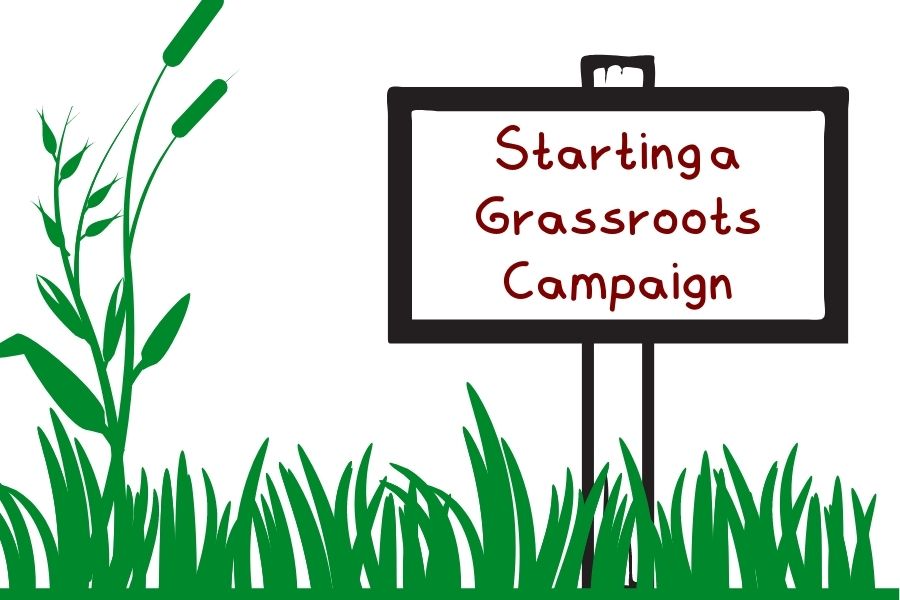Starting a local grassroots campaign is challenging. But with commitment and the right strategy, you can make a meaningful impact in your community. This guide will walk you through the steps to successfully launch your local grassroots campaign, from planning to execution. We’ll discuss building diverse support, storytelling, and the role of technology in modern campaigning.
The first and most necessary step to launch a grassroots campaign is to decide what type of campaign you want to run. Do you want to run for public office? Are you going to become an activist? Do you want to be a voice for your community? Your campaign’s purpose will shape the strategy, outreach methods, and resources you’ll need.
Mobilizing people in your community around your political cause or goal can be done by registering people to vote, assisting with absentee ballots, or simply talking with them about what’s important to you and why they should care. Many successful campaigns start with neighborhood voter drives, building trust one conversation at a time. The people who will join your campaign will share the same interests and values as you do.
If you are planning to run for office, you will need to register as a candidate with the appropriate election commission in your state, county, or municipality. If you are not part of a political party, you will need to do much of the work yourself just to get on the ballot.
However, to organize broader support to win an election, you will need to get your name out there and start building your movement.
Free Tool: Are You Ready to Run for Office? Take a Self-Assessment Survey.
What is a grassroots political campaign?
Traditional political campaigns focus on gathering large sums of money and using this money to influence voters and persuade them to either vote for a specific candidate or get large numbers of individuals to contact policymakers to take action on a particular issue or cause.
In contrast, a grassroots campaign is usually initiated by an individual or small group that aims to persuade others about their cause for an issue, a political candidate, or other type of social change.
For local elections, grassroots efforts are more personal than traditional campaigning. They require more direct involvement with people in their community. This includes door-to-door canvassing, letter-writing campaigns, activist and volunteer activities, and voter mobilization. Real, one-on-one connections make grassroots efforts powerful tools for local change.
Steps to start a local grassroots campaign
The opportunity to change the fate of your local city, town, village, or state is not just reserved for well-funded politicians and wealthy backers. Anyone and everyone can launch grassroots and reform campaigns.
There are many reasons why one would want to start a grassroots campaign, from advocating for an issue to raising awareness about a candidate. Grassroots campaigns can provide enormous opportunities for policy change and have a big impact on public opinion.
A written strategy helps you figure out the steps you need to take to reach your advocacy goals. This makes it easier to focus on each task and avoids “analysis paralysis.”
A successful grassroots strategy follows these five fundamentals:
- Have a clear objective
- Identify your target audience
- Have an effective outreach plan for building community support
- Ongoing communication
Create a winning message to mobilize support
An effective grassroots message resonates with an audience and is something people can associate with. To do this, use storytelling techniques to create a emotional connection. Stories with real people and relatable characters are more compelling than just data and statistics.
It’s important to have a clear goal in mind when you start. What are you trying to achieve? For example, if you are running for local office, your goal is to win the election. For messaging from political grassroots groups to succeed, they need creative messages that people can connect with emotionally.
For example, if you want people to donate money to your campaign, you should have goals to reach that require a certain amount of money to be raised in a certain time frame. The more specific the goals, the easier it is to create an engaging message. Specific requests tend to resonate with voters or potential donors better than generic requests for help.
Without a unifying message, it’s hard to rally support for any cause. The best political messaging is interesting, memorable, and compelling. It must have a purpose and be focused on your supporters’ needs and desires. Successful advocacy groups use creative messages that people can connect with on an emotional level.
Free Campaigning Tips: Subscribe for free guides and updates from Online Candidate.
Raising funds for your grassroots campaign
Raising money to support grassroots campaigns is always a challenge. Start by focusing your efforts on your inner circle—those already invested in your cause or most likely to contribute. This approach helps create a sense of ownership and helps ensure your early supporters will retain long-term commitment.
Besides the money angle, effective fundraising is about building relationships and sustaining momentum. Grassroots campaigners should think outside the box and explore creative strategies, such as hosting community events, leveraging crowdfunding platforms, or partnering with local businesses. Consider sources of funding you may have overlooked, like in-kind donations that can offset expenses.
Regularly engage with your donors to keep them connected to your campaign and the candidate’s progress. Paying attention to their feedback and interests will help you understand how they can contribute even more effectively in the future.
Recruiting volunteers and growing support
Volunteers are an important part of grassroots advocacy campaigns. Volunteers help sustain and lead your efforts, so it’s important to develop a clear strategy for recruitment and building a solid campaign team.
Create a volunteer persona to identify who your likely supporters are and what issues they are passionate about. Target these groups with personalized messaging. Empower your volunteers by grouping them based on their skills and interests, then training them to be effective advocates.
For example, if you’re campaigning against local overdevelopment, homeowners in affected neighborhoods may become your most passionate supporters. Try to find people with relevant expertise and skills who can help bring others into the fold.
Work to create an inclusive environment where there is strong communication and cooperation. This will help volunteers work on projects where they can best contribute their talents and resources.
Local community building and organizing
Grassroots success starts with strong local connections. Leverage your local media, neighborhood associations, and any relationships or partnerships with community leaders to amplify the reach of your message. Town hall meetings, grassroots petitions, and events at community hubs like libraries or parks are great ways to gather support.
To help outreach, do the following:
- Create a website for your primary messaging and online organizing.
- Use social media platforms like Facebook, Instagram, and X / Twitter to spread your message and engage with supporters.
- Get the candidate and volunteers involved in the ground game through local events and door-to-door canvassing.
- Start an email and texting program to keep everyone in touch.
- Use software to organize volunteers, track spending and track voter trends.
Real, boots-on-the-ground field work is how you’ll make a difference. Campaign that are involved regular canvassing see voter turnout increase in their district. Combine digital outreach with in-person efforts to maximize your impact.
Grassroots advertising budgets are generally less than those of well-funded political campaigns. This may limit expensive advertising mediums like TV ads or billboards to get their message across.
Run an effective social media campaign to reach voters
Producing content for social media is one of the most important aspects in running a successful campaign. Use social media platforms like Facebook, Twitter, and Instagram to organize efforts, fundraise and get the word out about your cause.
For example, if you wanted to promote an upcoming campaign event, you could create a Facebook even for people who are interested and send them notifications. You may need to pay to promote posts to ensure your messages reach your followers, but that is inexpensive and very targeted advertising.
Social media campaigns have become a major part of digital politics. Today, all political parties and most candidates use social media platforms to reach voters and supporters. The importance of digital campaigning makes it imperative for organizations to have a well-thought plan in place.
Conclusion:
Starting a local grassroots campaign gives new candidates and advocates the opportunity to build a meaningful presence in their communities. By focusing on strategic planning, local outreach, and community-driven fundraising, you can inspire change and make a lasting impact on Election Day.
Related:
« So You Want To Run for County Government? Here’s How To Get StartedCombining Political Print and Digital Marketing Strategies »
Tags: grassroots, local politics







